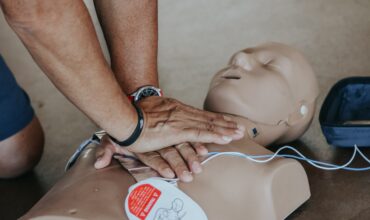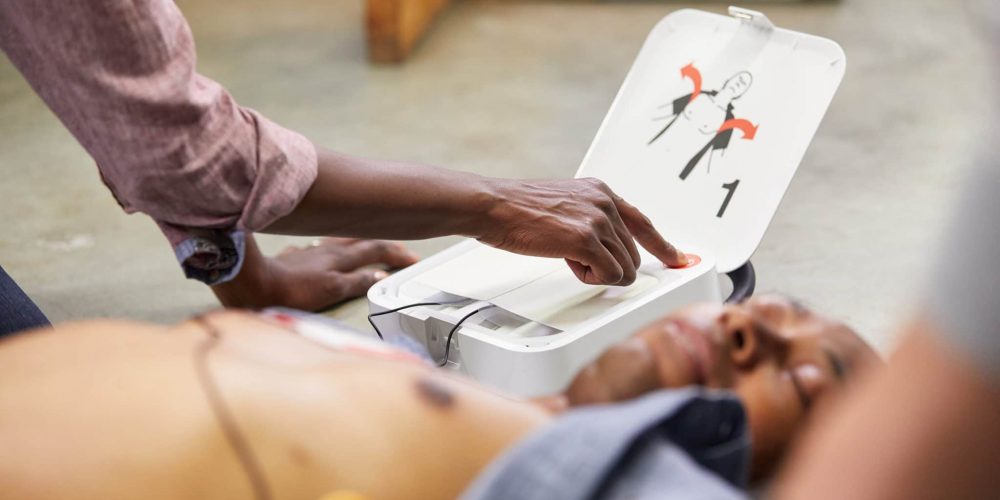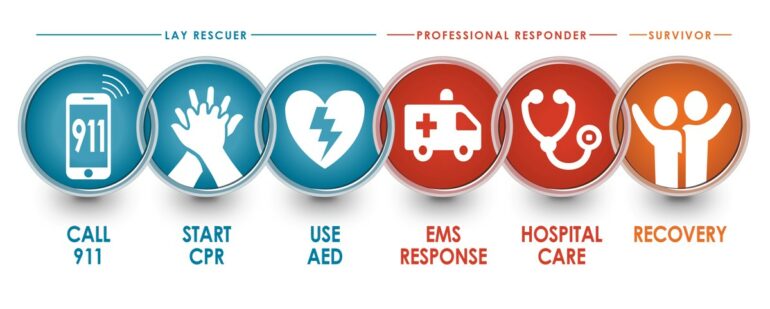- Your cart is empty
- Continue Shopping


An automated external defibrillator (AED) is a portable device that can be used to treat sudden cardiac arrest (SCA) by delivering an electric shock to the heart. When someone is in SCA, their heart is no longer able to pump blood effectively, which can lead to death if not treated within a few minutes. An AED is designed to be used by laypeople and is typically found in public places such as airports, malls, and schools.
To use an AED, the operator first turns on the device and follows the instructions provided by the device’s onboard computer. This typically involves placing the AED’s adhesive pads on the person’s chest and connecting them to the device.
The machine then analyzes the person’s heart rhythm and determines if a shock is needed. If a shock is needed, the AED will instruct the operator to press a button to deliver the shock.
The electric shock delivered by an AED is intended to restore the heart’s normal rhythm. When the shock is delivered, the person’s body may briefly convulse, but this is a normal part of the defibrillation process.
After the shock is delivered, the device will typically instruct the operator to perform CPR until emergency medical help arrives.
The automated external defibrillator (AED) was invented as a result of research into the treatment of sudden cardiac arrest (SCA). SCA is a condition in which the heart suddenly and unexpectedly stops beating, and it is a leading cause of death worldwide. In the early 1950s, researchers began to explore the use of electric shocks to the heart as a way to restore a normal heart rhythm in people who were experiencing SCA.
Over the next few decades, researchers continued to develop and refine the technology needed to make defibrillation more widely available. In the late 1980s, the first portable AEDs were developed, and they were initially used only by trained medical professionals.
As the technology continued to improve, AEDs became smaller, more portable, and easier to use. This made it possible for laypeople to use AEDs in emergency situations. Today, AEDs are commonly found in public places such as airports, malls, and schools, and they are an important tool in the Chain of Survival for SCA.

The sudden cardiac arrest (SCA) chain of survival is a set of steps that should be followed to increase a person’s chances of survival after experiencing SCA. These steps are:
By following the SCA chain of survival, it is possible to increase a person’s chances of survival after experiencing SCA. It is important to note that each of these steps is equally important and should be performed as quickly as possible.
In summary, an AED is a portable device that can be used to treat sudden cardiac arrest by delivering an electric shock to the heart. It is designed to be used by laypeople and is often found in public places. To use a portable defibrillator, the operator simply follows the instructions provided by the device.
Loading...
If so, just fill our your email address below and submit.
Implementation Guide